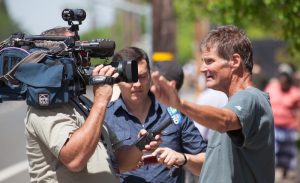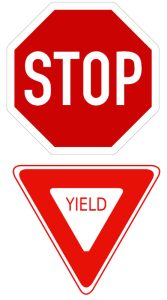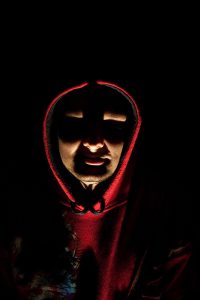21
Eyewitnesses can provide very compelling legal testimony, but rather than recording experiences flawlessly, their memories are susceptible to a variety of errors and biases. They (like the rest of us) can make errors in remembering specific details and can even remember whole events that did not actually happen. In this module, we discuss several of the common types of errors, and what they can tell us about human memory and its interactions with the legal system.
Learning Objectives
- Describe the kinds of mistakes that eyewitnesses commonly make and some of the ways that this can impede justice.
- Explain some of the errors that are common in human memory.
- Describe some of the important research that has demonstrated human memory errors and their consequences.
What is Eyewitness Testimony?
Eyewitness testimony is what happens when a person witnesses a crime (or accident, or other legally important event) and later gets up on the stand and recalls for the court all the details of the witnessed event. It involves a more complicated process than might initially be presumed. It includes what happens during the actual crime to facilitate or hamper witnessing, as well as everything that happens from the time the event is over to the later courtroom appearance. The eyewitness may be interviewed by the police and numerous lawyers, describe the perpetrator to several different people, and make an identification of the perpetrator, among other things.

Why Is Eyewitness Testimony an Important Area of Psychological Research?
When an eyewitness stands up in front of the court and describes what happened from her own perspective, this testimony can be extremely compelling—it is hard for those hearing this testimony to take it “with a grain of salt,” or otherwise adjust its power. But to what extent is this necessary?
There is now a wealth of evidence, from research conducted over several decades, suggesting that eyewitness testimony is probably the most persuasive form of evidence presented in court, but in many cases, its accuracy is dubious. There is also evidence that mistaken eyewitness evidence can lead to wrongful conviction—sending people to prison for years or decades, even to death row, for crimes they did not commit. Faulty eyewitness testimony has been implicated in at least 75% of DNA exoneration cases—more than any other cause (Garrett, 2011). In a particularly famous case, a man named Ronald Cotton was identified by a rape victim, Jennifer Thompson, as her rapist, and was found guilty and sentenced to life in prison. After more than 10 years, he was exonerated (and the real rapist identified) based on DNA evidence. For details on this case and other (relatively) lucky individuals whose false convictions were subsequently overturned with DNA evidence, see the Innocence Project website (http://www.innocenceproject.org/).
There is also hope, though, that many of the errors may be avoidable if proper precautions are taken during the investigative and judicial processes. Psychological science has taught us what some of those precautions might involve, and we discuss some of that science now.
Misinformation

In an early study of eyewitness memory, undergraduate subjects first watched a slideshow depicting a small red car driving and then hitting a pedestrian (Loftus, Miller, & Burns, 1978). Some subjects were then asked leading questions about what had happened in the slides. For example, subjects were asked, “How fast was the car traveling when it passed the yield sign?” But this question was actually designed to be misleading, because the original slide included a stop sign rather than a yield sign.
Later, subjects were shown pairs of slides. One of the pair was the original slide containing the stop sign; the other was a replacement slide containing a yield sign. Subjects were asked which of the pair they had previously seen. Subjects who had been asked about the yield sign were likely to pick the slide showing the yield sign, even though they had originally seen the slide with the stop sign. In other words, the misinformation in the leading question led to inaccurate memory.
This phenomenon is called the misinformation effect, because the misinformation that subjects were exposed to after the event (here in the form of a misleading question) apparently contaminates subjects’ memories of what they witnessed. Hundreds of subsequent studies have demonstrated that memory can be contaminated by erroneous information that people are exposed to after they witness an event (see Frenda, Nichols, & Loftus, 2011; Loftus, 2005). The misinformation in these studies has led people to incorrectly remember everything from small but crucial details of a perpetrator’s appearance to objects as large as a barn that wasn’t there at all.
These studies have demonstrated that young adults (the typical research subjects in psychology) are often susceptible to misinformation, but that children and older adults can be even more susceptible (Bartlett & Memon, 2007; Ceci & Bruck, 1995). In addition, misinformation effects can occur easily, and without any intention to deceive (Allan & Gabbert, 2008). Even slight differences in the wording of a question can lead to misinformation effects. Subjects in one study were more likely to say yes when asked “Did you see the broken headlight?” than when asked “Did you see a broken headlight?” (Loftus, 1975).
Other studies have shown that misinformation can corrupt memory even more easily when it is encountered in social situations (Gabbert, Memon, Allan, & Wright, 2004). This is a problem particularly in cases where more than one person witnesses a crime. In these cases, witnesses tend to talk to one another in the immediate aftermath of the crime, including as they wait for police to arrive. But because different witnesses are different people with different perspectives, they are likely to see or notice different things, and thus remember different things, even when they witness the same event. So when they communicate about the crime later, they not only reinforce common memories for the event, they also contaminate each other’s memories for the event (Bernstein & Loftus, 2009b; Paterson & Kemp, 2006; Takarangi, Parker, & Garry, 2006).
The misinformation effect has been modeled in the laboratory. Researchers had subjects watch a video in pairs. Both subjects sat in front of the same screen, but because they wore differently polarized glasses, they saw two different versions of a video, projected onto a screen. So, although they were both watching the same screen, and believed (quite reasonably) that they were watching the same video, they were actually watching two different versions of the video (Garry, French, Kinzett, & Mori, 2008).
In the video, Eric the electrician is seen wandering through an unoccupied house and helping himself to the contents thereof. A total of eight details were different between the two videos. After watching the videos, the “co-witnesses” worked together on 12 memory test questions. Four of these questions dealt with details that were different in the two versions of the video, so subjects had the chance to influence one another. Then subjects worked individually on 20 additional memory test questions. Eight of these were for details that were different in the two videos. Subjects’ accuracy was highly dependent on whether they had discussed the details previously. Their accuracy for items they had not previously discussed with their co-witness was 79%. But for items that they had discussed, their accuracy dropped markedly, to 34%. That is, subjects allowed their co-witnesses to corrupt their memories for what they had seen.
Identifying Perpetrators
In addition to correctly remembering many details of the crimes they witness, eyewitnesses often need to remember the faces and other identifying features of the perpetrators of those crimes. Eyewitnesses are often asked to describe that perpetrator to law enforcement and later to make identifications from books of mug shots or lineups. Here, too, there is a substantial body of research demonstrating that eyewitnesses can make serious, but often understandable and even predictable, errors (Caputo & Dunning, 2007; Cutler & Penrod, 1995).
In most jurisdictions in the United States, lineups are typically conducted with pictures, called photo spreads, rather than with actual people standing behind one-way glass (Wells, Memon, & Penrod, 2006). The eyewitness is given a set of small pictures of perhaps six or eight individuals who are dressed similarly and photographed in similar circumstances. One of these individuals is the police suspect, and the remainder are “foils” or “fillers” (people known to be innocent of the particular crime under investigation). If the eyewitness identifies the suspect, then the investigation of that suspect is likely to progress. If a witness identifies a foil or no one, then the police may choose to move their investigation in another direction.

This process is modeled in laboratory studies of eyewitness identifications. In these studies, research subjects witness a mock crime (often as a short video) and then are asked to make an identification from a photo or a live lineup. Sometimes the lineups are target present, meaning that the perpetrator from the mock crime is actually in the lineup, and sometimes they are target absent, meaning that the lineup is made up entirely of foils. The subjects, or mock witnesses, are given some instructions and asked to pick the perpetrator out of the lineup. The particular details of the witnessing experience, the instructions, and the lineup members can all influence the extent to which the mock witness is likely to pick the perpetrator out of the lineup, or indeed to make any selection at all. Mock witnesses (and indeed real witnesses) can make errors in two different ways. They can fail to pick the perpetrator out of a target present lineup (by picking a foil or by neglecting to make a selection), or they can pick a foil in a target absent lineup (wherein the only correct choice is to not make a selection).
Some factors have been shown to make eyewitness identification errors particularly likely. These include poor vision or viewing conditions during the crime, particularly stressful witnessing experiences, too little time to view the perpetrator or perpetrators, too much delay between witnessing and identifying, and being asked to identify a perpetrator from a race other than one’s own (Bornstein, Deffenbacher, Penrod, & McGorty, 2012; Brigham, Bennett, Meissner, & Mitchell, 2007; Burton, Wilson, Cowan, & Bruce, 1999; Deffenbacher, Bornstein, Penrod, & McGorty, 2004).
It is hard for the legal system to do much about most of these problems. But there are some things that the justice system can do to help lineup identifications “go right.” For example, investigators can put together high-quality, fair lineups. A fair lineup is one in which the suspect and each of the foils is equally likely to be chosen by someone who has read an eyewitness description of the perpetrator but who did not actually witness the crime (Technical Working Group for Eyewitness Evidence, 1999). This means that no one in the lineup should “stick out,” and that everyone should match the description given by the eyewitness. Other important recommendations that have come out of this research include better ways to conduct lineups, “double blind” lineups, unbiased instructions for witnesses, and conducting lineups in a sequential fashion (see Technical Working Group for Eyewitness Evidence, 1999; Wells et al., 1998; Wells & Olson, 2003).
Kinds of Memory Biases
Memory is also susceptible to a wide variety of other biases and errors. People can forget events that happened to them and people they once knew. They can mix up details across time and place. They can even remember whole complex events that never happened at all. Importantly, these errors, once made, can be very hard to unmake. A memory is no less “memorable” just because it is wrong.

Some small memory errors are commonplace, and you have no doubt experienced many of them. You set down your keys without paying attention, and then cannot find them later when you go to look for them. You try to come up with a person’s name but cannot find it, even though you have the sense that it is right at the tip of your tongue (psychologists actually call this the tip-of-the-tongue effect, or TOT) (Brown, 1991).
Other sorts of memory biases are more complicated and longer lasting. For example, it turns out that our expectations and beliefs about how the world works can have huge influences on our memories. Because many aspects of our everyday lives are full of redundancies, our memory systems take advantage of the recurring patterns by forming and using schemata, or memory templates (Alba & Hasher, 1983; Brewer & Treyens, 1981). Thus, we know to expect that a library will have shelves and tables and librarians, and so we don’t have to spend energy noticing these at the time. The result of this lack of attention, however, is that one is likely to remember schema-consistent information (such as tables), and to remember them in a rather generic way, whether or not they were actually present.
False Memory
Some memory errors are so “large” that they almost belong in a class of their own: false memories. Back in the early 1990s a pattern emerged whereby people would go into therapy for depression and other everyday problems, but over the course of the therapy develop memories for violent and horrible victimhood (Loftus & Ketcham, 1994). These patients’ therapists claimed that the patients were recovering genuine memories of real childhood abuse, buried deep in their minds for years or even decades. But some experimental psychologists believed that the memories were instead likely to be false—created in therapy. These researchers then set out to see whether it would indeed be possible for wholly false memories to be created by procedures similar to those used in these patients’ therapy.
In early false memory studies, undergraduate subjects’ family members were recruited to provide events from the students’ lives. The student subjects were told that the researchers had talked to their family members and learned about four different events from their childhoods. The researchers asked if the now undergraduate students remembered each of these four events—introduced via short hints. The subjects were asked to write about each of the four events in a booklet and then were interviewed two separate times. The trick was that one of the events came from the researchers rather than the family (and the family had actually assured the researchers that this event had not happened to the subject). In the first such study, this researcher-introduced event was a story about being lost in a shopping mall and rescued by an older adult. In this study, after just being asked whether they remembered these events occurring on three separate occasions, a quarter of subjects came to believe that they had indeed been lost in the mall (Loftus & Pickrell, 1995). In subsequent studies, similar procedures were used to get subjects to believe that they nearly drowned and had been rescued by a lifeguard, or that they had spilled punch on the bride’s parents at a family wedding, or that they had been attacked by a vicious animal as a child, among other events (Heaps & Nash, 1999; Hyman, Husband, & Billings, 1995; Porter, Yuille, & Lehman, 1999).
More recent false memory studies have used a variety of different manipulations to produce false memories in substantial minorities and even occasional majorities of manipulated subjects (Braun, Ellis, & Loftus, 2002; Lindsay, Hagen, Read, Wade, & Garry, 2004; Mazzoni, Loftus, Seitz, & Lynn, 1999; Seamon, Philbin, & Harrison, 2006; Wade, Garry, Read, & Lindsay, 2002). For example, one group of researchers used a mock-advertising study, wherein subjects were asked to review (fake) advertisements for Disney vacations, to convince subjects that they had once met the character Bugs Bunny at Disneyland—an impossible false memory because Bugs is a Warner Brothers character (Braun et al., 2002). Another group of researchers photoshopped childhood photographs of their subjects into a hot air balloon picture and then asked the subjects to try to remember and describe their hot air balloon experience (Wade et al., 2002). Other researchers gave subjects unmanipulated class photographs from their childhoods along with a fake story about a class prank, and thus enhanced the likelihood that subjects would falsely remember the prank (Lindsay et al., 2004).
Using a false feedback manipulation, we have been able to persuade subjects to falsely remember having a variety of childhood experiences. In these studies, subjects are told (falsely) that a powerful computer system has analyzed questionnaires that they completed previously and has concluded that they had a particular experience years earlier. Subjects apparently believe what the computer says about them and adjust their memories to match this new information. A variety of different false memories have been implanted in this way. In some studies, subjects are told they once got sick on a particular food (Bernstein, Laney, Morris, & Loftus, 2005). These memories can then spill out into other aspects of subjects’ lives, such that they often become less interested in eating that food in the future (Bernstein & Loftus, 2009b). Other false memories implanted with this methodology include having an unpleasant experience with the character Pluto at Disneyland and witnessing physical violence between one’s parents (Berkowitz, Laney, Morris, Garry, & Loftus, 2008; Laney & Loftus, 2008).
Importantly, once these false memories are implanted—whether through complex methods or simple ones—it is extremely difficult to tell them apart from true memories (Bernstein & Loftus, 2009a; Laney & Loftus, 2008).
Conclusion
To conclude, eyewitness testimony is very powerful and convincing to jurors, even though it is not particularly reliable. Identification errors occur, and these errors can lead to people being falsely accused and even convicted. Likewise, eyewitness memory can be corrupted by leading questions, misinterpretations of events, conversations with co-witnesses, and their own expectations for what should have happened. People can even come to remember whole events that never occurred.
The problems with memory in the legal system are real. But what can we do to start to fix them? A number of specific recommendations have already been made, and many of these are in the process of being implemented (e.g., Steblay & Loftus, 2012; Technical Working Group for Eyewitness Evidence, 1999; Wells et al., 1998). Some of these recommendations are aimed at specific legal procedures, including when and how witnesses should be interviewed, and how lineups should be constructed and conducted. Other recommendations call for appropriate education (often in the form of expert witness testimony) to be provided to jury members and others tasked with assessing eyewitness memory. Eyewitness testimony can be of great value to the legal system, but decades of research now argues that this testimony is often given far more weight than its accuracy justifies.
Text Attribution
Media Attributions
- eyewitness
- Stop sign and Yield sign
- Hooded Figure
- FreeLibraryOfPhiladelphia10
A memory error caused by exposure to incorrect information between the original event (e.g., a crime) and later memory test (e.g., an interview, lineup, or day in court).
A selection of normally small photographs of faces given to a witness for the purpose of identifying a perpetrator.
Any member of a lineup (whether live or photograph) other than the suspect.
A research subject who plays the part of a witness in a study.
A memory template, created through repeated exposure to a particular class of objects or events.
Memory for an event that never actually occurred, implanted by experimental manipulation or other means.
